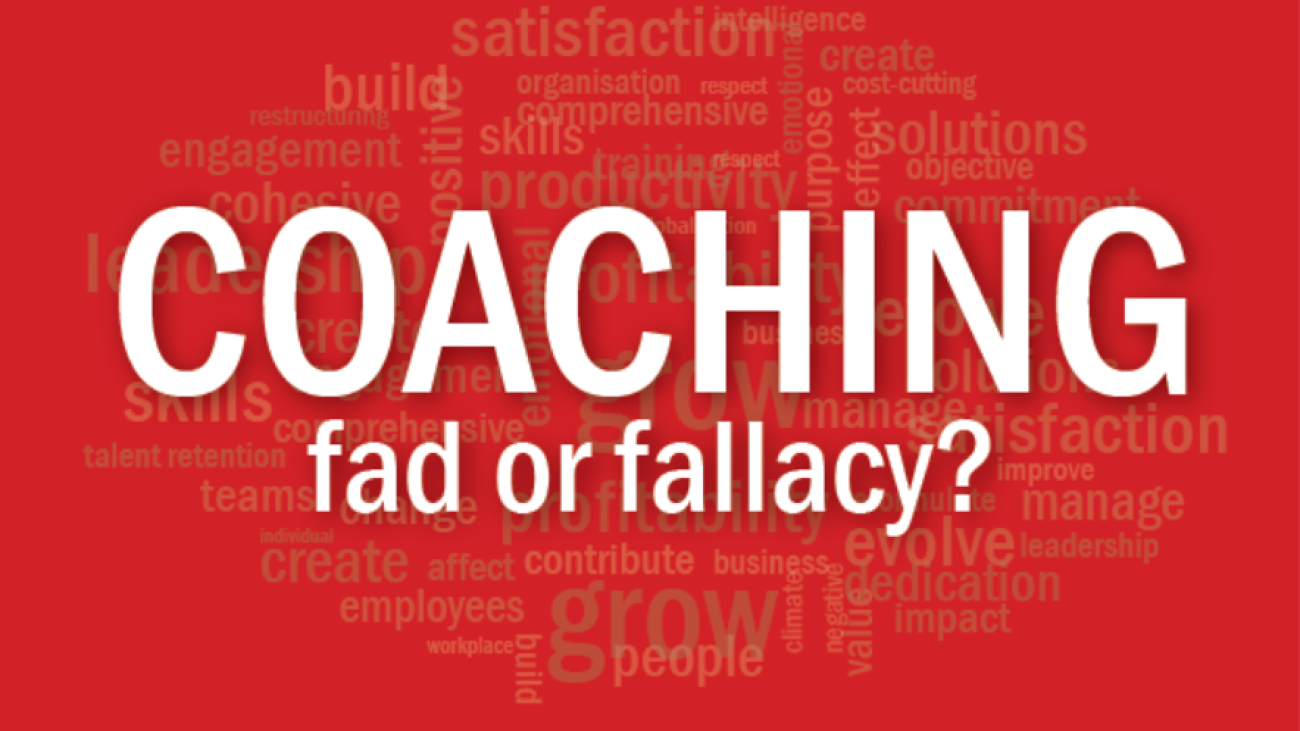Nurturing a coaching culture in organisations has long been considered an effective means to achieve a happy, healthy workplace. As South Africans and businesses start to feel the effects of an economic slump caused by Covid-19, the value of coaching has proven invaluable in creating positive, success-driven workplaces able to weather the storm.
Jet soars high and successfully steers its people out of Covid-19 storm
While many businesses were retrenching employees and shifting into survival mode when the Covid-19 lockdown period was first implemented, one South African institution stood out for making a difference – not only to the lives of its employees but the community at large.
Your staff may be unhappy – here’s why you should care
From office politics, cliques and favouritism to employees being overworked and feeling under appreciated, an unhappy, disengaged workforce is one of the main reasons many businesses will not reach performance targets.
Through my experiences in training and executive coaching, I have often noted with surprise how, time and time again, c-suite executives overlook the very obvious connection between toxic culture and poor business performance. What could have gone wrong, when all the boxes – strategy, innovation, forward-thinking – were all ticked?
There are many factors constantly at play and contributing toward the overall culture of an organisation. Leadership teams have an important role to play in this regard, ensuring there is effective communication and dialogue taking place between employees and management, that there are measures in place to prevent favouritism, bullying, and unhealthy workplace practices.
The truth is that Peter Drucker’s famous quote, “culture eats strategy for breakfast”, rings truer than ever, reminding us that no matter how well considered your strategy may be, it’s nothing more than a paper exercise without engaged employees who contribute meaningfully to company culture to execute it.
What do we mean when we talk about a ‘holistic’ approach? Find out more over on the blog.
On our blog, you will also find a case study in excellence, JET Education Services journey to overcoming the challenges dealt by Covid-19. And, in keeping with our theme of positive organisational cultures for positive bottom line impact, our insights into the importance of creating a coaching culture are an absolute must read for organisations preparing to brave the socio-economic impact of the Covid waves.
I sincerely hope you enjoy our content this month. Reach out and let me know if there’s anything else you’d like us to cover in upcoming newsletters and blog content – or even if you would like to collaborate!
Warm regards,
Dr Mariam Sha,MD at Awakening Excellence
Author of The Engaged Workforce: 6 practical steps to creating a coaching culture

Improve business bottom line through coaching at work
“Improve business bottom line through coaching at work.”
One of the fastest growing industries in the world, coaching, is embedding itself as a widespread development tool. It is being used by organisations across the UK and increasingly worldwide. In South Africa, a number of larger organisations encourage and pay for their management teams to receive coaching, whether it is from an internal or external coach. Many leading organisations in South Africa have also empowered and developed managers to become coaches at work. Coaching is being used in numerous areas, both in and outside of the corporate environment, including for personal development, change management, performance management, communications, team development and career development, personal wealth, stress, relationships and, most recently, for work/life balance and lifestyle change.
Why Coach?
Coaching is unique in that it is based on the belief that every person has all the mental, physical and emotional resources they need to be successful doing whatever they choose to do.
What then, are the impediments to achieving our goals? Often, as individuals we question our journey direction and experience challenges in meeting our life goals as we easily get side tracked. Often we give up because of our own limiting beliefs, irrespective whether these have been acquired through circumstance or self imposed.
A coach can help us to unpack limiting beliefs, embrace supportive beliefs and ensure we are accountable for actions agreed with the coach. Furthermore, a coach assists to unlock any hidden or as-yet-unrealised potential. With the use of effective questioning techniques a coach can help us to clear any limiting beliefs by bringing clarity and purpose to our lives.
What makes coaching appealing?
Coaches do not impose their solutions, opinions or products on the organisation or individual, they: –
• Specialise in and use modern continuous improvement and personal development tools and techniques (e.g. GROW Model, NLP, Inner Game, Self Assessment models, improvement planning)
• Create an ‘outside-in’ viewpoint and awareness, in which solutions and actions are seen very clearly
• Offer a non-directive form of development
• Focus on improving performance and developing an individuals’ skills
• Deploy activities that address organisational and individual goals
• Challenge the ‘normal’ way of doing and thinking about things
• Create an atmosphere of openness, honesty and the desired (but rarely achieved) states of ‘relaxed concentration’ and ‘flow’
• Focus on the specific needs of the person or organisation being coached
• Provide an independent sounding board
• Are able to hold people accountable to actions whilst maintaining rapport
• Do not have to ‘manage’ (e.g. enforce policies, standards and rules)
• Do not carry the baggage of previous relationships or the organisation’s history – in the case of external coaches
The Benefits of Coaching for organisations and individuals
According to a survey by the International Personnel Management Association, training and development has shown that, following training, employee productivity increased by just over 22%, whereas training combined with coaching produces an increase in productivity of 88%.
Many experts and I, in my own experience, have observed marked improvements in the individual’s focus, clarity and purpose, work life balance, confidence in abilities and future, being equipped with tools to effect real change in ones life whenever it becomes necessary, achieving goals they could never reach on their own and being more organised according to ‘first things first’ – after receiving coaching.
Corporate coaching is used in a number of different ways to achieve real value for the organisation and its people, including: –
- Achievement of performance goals at organisational, team and individual levels
- Improved effectiveness and efficiency
- Successful change More effective leadership
- Improved teamwork and partnerships
- High impact communication
- Robust, value-added performance management and continuous improvement systems
- Maximising the return on investment from formal training
The basic structure of a coaching session is:
- Looking at where the client is now
- Setting goals for the session
- Exploring possible options
- Agreeing actions to move closer to the goal
- Summarising what has been agreed
- Reviewing previous actions
Contact us on Mariam@awakeningexcellence.co.za to book a coaching session.
Executive Coaching
The shift over the last century from agriculture to manufacturing with specialisation of labour being the predominant business operating model, an authoritarian style of management was prevalent. In the current knowledge economy, there is greater globalisation and talent mobility, quicker decision making, shorter time to upskill people, necessitating a different management style.
This is further confirmed by Valerio & Lee (2005) – Since the mid-1990s, the pace of change in the business world has accelerated. Greater demands are now placed on leadership. Corporations have grown lean and lost a great deal of talent in their downsizing. Those left in charge have often lacked the years of experience needed to inform their decision making. This means there has been precious little time for consensus building or intelligence gathering, and so the risk of errors by a leader or a leadership
team has increased. Coaching has emerged as the preferred just-in-time lesson to help leverage the areas that would have the greatest impact on results.
Coaching taps into the potential of individuals, the belief being the individual with the challenge often has the solution. Coaching has a holistic approach – shifting behaviour patterns, creating awareness of the management of emotions impacting self and others to changing thinking patterns with clear focus on end goals.
Organisations wanting to change the style of managing people often call in coaches to create a coaching culture. In this instance managers are trained to be coaches and are themselves coached to bring about the swell of culture change over a short period. These organisations see coaching as a strategic business imperative.
One of the frequent requests for Executive Coaching is working with the dilemma faced by executives to achieve business targets and results at the expense of supporting people. Thus, both Executives and people are fatigued, this impacting productivity, employee engagement and wellness. Targets may be achieved but levels of illness, absenteeism and staff turnover are on the rise. This begs the question of actual business results verse perceived results. What is it costing the organisation in absenteeism, and to recruit, re-train, and manage a disengaged workforce.
Each executive coaching intervention is unique to their situation. The benefits measured and observed has been tremendous; more self-awareness, improved communications at all levels, reduced stress levels, better relationships in the personal and business space, improved team engagement and clear focus and achievement of objectives.
Coaching in general and executive coaching works because the ownership rests with the individual being coached, through self-awareness changes are made by the individual. The coach is the facilitator of the change but the client is the one driving the process.
“The people, led by wise leadership, will come to the realisation, “we did it ourselves.” Lao-Tsu
Coaching: Fad or Fallacy?
Globalisation of business; flatter, leaner organisations; rapid changes, restructuring and cost-cutting strategies; and the inadequacy of training on its own have been some of the driving forces behind the greater need for coaching.
The demands placed on organisational leadership in the new business environment has expanded greatly; talent, skills and leadership have been lost through downsizing. In the mean-time, those left in charge often do not have the years of experience needed to inform their decision-making.
According to Valerio and Lee (2005), coaching emerged as the preferred “just-in-time” learning to help leverage the areas that would have the greatest impact on results.
There is much confusion as to what coaching really is and how it differs from counselling and mentoring. The general definitions of coaching suggest that a coach works with an individual to unlock their potential with a focus on taking an individual from their current state, to a positive desired future state.
Counselling, from a psychological perspective, addresses historical issues of the past and focuses on understanding and working on how past experiences impact on an individual’s current behaviour.
Mentoring is the transfer of skills from an experienced and skilled individual on a specific subject to another requiring this skill. A coach does not need to be a subject-matter expert to coach an individual.
It is the technique of questioning, listening and motivating as well as being goal-oriented that is key to the coaching relationship.
In South Africa coaching has been introduced in organisations for a number of reasons. Retaining talent, refining leadership style, enhancing and supplementing training, and addressing under-performance are among the many outcomes an organisation anticipates from coaching. And what transpires as coaching is often a combination of teaching, mentoring, counselling and coaching.
In organisations where it has been introduced as an under-performance improvement measure, coaching as a positive tool is often tainted by negative perceptions, where people shy away from the experience. When clear and measurable objectives are not set by coach and coachees for the coaching intervention, imprecise outcomes are formed that call the value of coaching into question. In this way and for this reason, some organisations are reluctant in creating a coaching culture.
However, research confirms that coaching taps into the natural way the brain functions, improving and enhancing individual performance. Because of this, coaching is certainly valuable for underperformers, talented individuals or anyone wanting to change behaviour or achieve a goal. Creating a coaching culture empowers every individual in the organisation to take on a leadership role by applying the coaching methodology in their leadership style.
In addition, the move away from instructions and authoritarian styles of management means that individuals are respected for their contribution through an ingrained belief that they have the answers to their problems. As such, coaching is powerful and effective, because individuals reach their own conclusions, deciding on actions that they willingly commit to. This culture creates a climate that empowers individuals and teams to generate results.
Furthermore, research shows that training supported by coaching is significantly more effective than coaching alone. According to a survey by the International Personnel Management Association, the impact of training on productivity is 22.4%, whereas, training plus coaching achieves a dramatic 88% increase in productivity. Hence, coaching in the workplace has a positive impact on the bottom line.
The International Coaching Federation (2009) reported that executives who were coached for a minimum of six months experienced a 77% improvement in their working relationships with direct reports; 71% with supervisors; and 63% with peers. Additionally, job satisfaction rose by 61% and organizational commitment went up 44%.
Coaching is not a fad, nor the latest trend in management, neither is it seen as a ‘feel-good’ exercise unrelated to business objectives. Coaching is increasingly recognised as a methodology for creating effective conversations, assessing and reformulating values and goals, and reaching solutions (Zeus and Skiffington, 2002).
Why a coaching culture is key to employee engagement
When we think of the most important qualities every manager should possess, the first to come to mind might be innovative, empathetic or motivating.
Google, on the other hand – known for its people-centric approach to creating a successful organisation – identified 10 behaviours that all its best managers share. The most important of all at the top of this list was ‘being a good coach’.
A coaching culture is certainly not a new concept, but one that is increasingly being adopted in businesses across the globe that have recognised the value of coaching and its impact on business, employee well-being and engagement, and management effectiveness. And, with employee turnover rates being higher than ever before, having a manager who is equipped to coach, engage and motivate their people is one of the best ways to retain talent.
How does an executive, manager, supervisor, or team leader who is equipped with the skills to coach individuals, help keep employees engaged at work?
- Using coaching skills, managers are better equipped to listen, understand and empathise with team members’ experiences. These insights help to create a more accepting and pleasant workplace atmosphere.
- As senior internal members of staff are empowered with coaching skills, they serve as examples to the rest of a workforce that the company values continuous growth and development.
- As managers or leaders coach others (peer coaching), creating thinking partnerships, demonstrates to employees the solution focused approach of leaders and the organisation.
- Coaching empowers employees to take ownership and responsibility for their work, isn’t this what most employers grapple with?
- Coaching encourages diversity of thinking, bringing in new perspectives to an issue or challenge, creating an innovative work environment, much needed in this digital age we are in.
- In our ‘Coaching for High Performance’ training in particular, managers are trained to measure the impact of coaching interventions undertaken with their own coachees and teams. This includes financial, non-financial, tangible and intangible impact. In this way, the ‘coach’ is able to glean how well individuals are responding to coaching and make changes where necessary.
Building coaching into the fabric of a business by imparting coaching skills to managers and, by ripple effect, across all employees, is a great way to foster a coaching culture, build a strong pool of leaders ready to tackle any challenge, and enable an engaged, present workforce.
Remember that there is no one size fits all approach to coaching, and it may not be a question of choosing either internal or external coaching as a way forward for your business, but perhaps both. Speak to us about our Coaching for High Performance training and one-on-one as well as group coaching interventions to find out how your business can prosper from building coaching culture in 2022.
Re-programme your thinking: Live the life you choose
During Sunday lunch on a beautiful summer’s day a group of friends talk about their life.
“Tomorrow is Monday and work again, I wish I could do whatever I wanted, I dislike my work and my boss is so annoying” Justine complains.
“So what’s stopping you” asks Sally.
“I need the money, and where would I find another job in these difficult times and at my age,” says Justine.
“I think we are all in the same boat, stuck in our jobs until retirement, I suppose we should make the most of our weekend.” sighs Thuli.
Having worked in the space of coaching and people development for many years, I am saddened by how easily we give up on living a better life. We are quick to place blame and responsibility on something or someone.
From my research and experience on how we function and are programmed, I believe that every action creates a reality for tomorrow. Decisions on eating healthy, exercising and keeping fit, relationships, the work we do, our activities are daily choices. We prioritise and decide which is important and which isn’t. We create a mental picture of where and on what we will be spending time, energy and resources. Often, when questioned, we come up with excuses that we do it for others or that we have no options or choice. Yet that very statement is an act of choice.
BE ACTIVE NOT PASSIVE IN YOUR LIFE’S JOURNEY. Decide on how you spend this precious time on earth, and what value you bring to yourself and others.
Our brain is programmed similarly to a computer, the neural pathways for our current programme have been created over years. We formed habits that we keep repeating and so deepening the pathways. When we continue doing what we have always done we will get the results we have always gotten. It is like story of the man who walks down the road and falls into a hole. The next day he takes the same route. We may be aware that we have created our own thinking and behaviour patterns up until now. But now we have the ability to make decisions and change our thinking and behaviour patterns to design the life we wish to live. WE HAVE CHOICE.
Reflect on your life, your relationships, the work you do and all aspects that make up your life, in each of these areas. Did you choose or allow it to happen? Was it circumstances and influences that shaped it, or was it your decision and choice? At times situations maybe out of our control, however the majority of times we make the decision and choice.
As a start to living your chosen life
Get to know yourself better: – What are you good at? What are your strengths? Are you using these strengths and where? This is particularly important when you find yourself questioning the work you are doing or in times of retrenchments and retirement. Once you are aware of your strengths you are then confident and aware of all the opportunities and possibilities of using these strengths. If you are unaware of what you are good at, life becomes scary, and the thought of losing a job is daunting.
What brings out your passion and energy? Think of times when you were so involved in a piece of work or activity that time flew by. Recapture these moments and repeat them as they motivate and energise you. When you decide on a career, think of these moments and choose to do what you enjoy. Do not be a victim of circumstances. Often people say I needed the money therefore I took the job. At times this may be true, but continuously seeking work that brings you happiness and engagement means you can move or share this with your employer to move positions in the company. Organisations benefit more from people who are engaged than those who are merely doing a job for a salary.
Think of how you can contribute to, not only yourself and immediate family, but the community at large. When we contribute to something bigger than ourselves we ignite the energy inside of us.
Continuously reflect on your day and the decisions you have made, was it a choice or were you a victim of circumstances? Change the programme in your brain to take ownership of your life, to make decisions because you have thought it through and chosen to make it and then take responsibility for the results. Learn from your decisions, if the results were not as you had anticipated, what would you do differently the next time?
Learn about yourself through people – request feedback on your behaviour and decide how and why you will change your behaviour.
A well-known Author and speaker tells a great story about a taxi driver who decided to soar like an eagle. If we take the lessons provided in this story and apply them to our lives, we too, can soar like eagles.
His story is about a taxi driver who heard about the POWER OF CHOICE one day.”
Power of choice is that you can be a duck or an eagle. The taxi driver exceeded customer expectations by being presentable, offering services such as beverages, reading material and facilities that very few other drivers offered. When his customers responded well, he did more and began to reap the benefits. In his first year as an eagle, he doubled his income from the previous year. The following year he quadrupled it. By changing his attitude from being a complainer to taking responsibility for his choices he attracted opportunities “making him an eagle soaring above the rest of the drivers”.
The brain is programmed to filter what you focus on. “If you expect a difficult life, you’ll rarely disappoint yourself”. It’s up to each of us to decide if we want to be a duck or an eagle.
It’s easy to cluster around similar thinking people, complaining about work and life. But being an eagle presents us with an opportunity to step out of the flock of ducks, look at the world from a higher vantage point, and rise above our self-imposed limitations.
WE HAVE CHOICE IN DESIGNING OUR LIVES – OWN IT!
Mistakes organisations make when implementing a coaching programme
The need for coaching and training interventions within organisations is now widely accepted and acknowledged, with 75% of organisations currently offering coaching and mentoring, according to a 2014 survey report by CIPD*.
The impact of implementing a coaching programme is certainly significant and measurable, however there are a few common mistakes that organisations tend to make when applying a coaching programme. To ensure practices are embedded in the culture of the organisation and there is long term sustainability, consider the points below when implementing a coaching programme.
What follows is an extract from Dr Mariam Sha’s book, The Engaged Workforce: 6 practical steps to creating a coaching culture): –
Ignoring the bigger picture, the larger map
Employees do not work in isolation, behaviour is impacted by groups and peers. In an organisation, cultural norms prevail that can either enable or prevent an employee from implementing change in a positive way. When offering coaching to an employee, an organisation should adopt a holistic approach. Employees being coached cannot change their behaviour if the system does not allow and welcome the change.
Set clear measurable objectives/goals – measure return on investment
Neglecting to set individual, team and organisational goals prior to commencing with a coaching programme leaves little room for measuring improvements and achieving outcomes. Track progress on the achievement of individual, team and organisational objectives. Encourage feedback on the programme and make the necessary changes to ensure that the strategic goals are met.
Participation is voluntary
Not every manager has the competencies or perhaps even the desire to be a coach. When deciding to implement coaching, an organisation needs to account for those managers who may lack the will or ability to coach their employees. Start with those managers that are committed to changing their style of management to a coaching style. Their success will encourage other managers to do so.
Skills and competencies
Workplace coaches should be carefully selected. The sponsor or HR need to be clear and in agreement on the specific competencies and behaviours of a coach, taking into consideration how these will be acquired and applied to ensure success.
Continuation of coaching after training
Training may be a step towards accreditation for a workplace coach. It’s vital that organisations provide ongoing supervision and monitoring for sustainability.
Coaches don’t have the answers
The explanations and expectations of coaching should be discussed upfront with all stakeholders. Everyone needs to understand that the coach should not be providing answers and solutions. The coach has the techniques and skills to listen, probe and question. If or when a coach responds to pressure from the coachee or the organisation to achieve ‘quick’ results, the outcome is likely to be superficial rather than a sustained behavioural change.
Coach and psychologist
Whether or not a coach is qualified in the discipline, psycho-therapy should not be brought into a coaching session. A coach can state and acknowledge the need for a psychologist where necessary, stepping away from the relationship. Note that people being coached may have major interpersonal difficulties, and, as such, it is essential that a coach determines at the outset why such a relationship would not reap the expected results.
Make time for coaching
Often managers raise time constraints as obstacles coaching their staff. Coaching is a style of management, it’s not an add-on requiring additional time. Create coachable moments: apply the coaching methodology during one-on-one meetings, performance appraisals or discussions on key issues. This serves to encourage individuals to think of solutions rather than the manager always providing solutions. Individuals are more likely to implement solutions they had thought of than those they have been instructed to carry out.
Order your copy of “An Engaged Workforce: 6 practical steps to creating a coaching culture”. Contact info@awakeningexcellence.co.za
Limiting Beliefs
The idea of achieving our goals can often be daunting; with so many of the people I’ve coached, it was commonplace to turn negative thoughts into reality, allowing destructive beliefs about ones’ self to place limitations on one’s abilities. These “limiting beliefs” are assumptions about reality that are not true, and are what stand in the way of us realising our full potential.
Have you built walls to block success in your life? Ask yourself: –
Do you find it difficult to realise and fulfil your goals?
Are you clear on what needs to be done, but unsure of how to go about it all?
Does it sometimes feel as though someone is blocking you from achieving more?
Are there inner “voices” telling you that you are never good enough, leading you to believe you will never be a success?
Do these sound like the type of statements you might be telling yourself?
- I’m a failure
- I will never be good enough
- I don’t have any skills or talent
- Life is a challenge
- It’s easier for some people
If you’ve answered yes to any of the above, you’re one of many who think in this way. But there are ways to change this habitual thinking.
There are times when most of us experience a sense of helplessness and despair – when we have tried every option to reach our goals and none seem to work. More often than not, we stand in the way of our own success, and we sabotage ourselves, by indulging in beliefs that do not serve us.
What are you saying to yourself that is working against your efforts to improve your life?
I frequently encounter people who struggle with limiting beliefs, especially when it comes to finances and finding a fulfilling career. Business owners, managers and individuals alike will have put time, effort and valuable resources into achieving their goals, and sometimes to no avail. What separates them from people who are successful, when we are all born with the innate ability and talent to reach what we set out to achieve?
Limiting beliefs
Our thoughts are powerful, if we think we can’t, we won’t; if we think we can, we will. Here are 6 tips to improving your life by changing limiting beliefs: –
- Become aware of what you say to yourself when you want to achieve or do something positive. For example if a manager asks me to coach her in managing her team, I might share with her best practice in people management. However, if her underlying belief is that people are useless, or only work for a salary, her management approach will be significantly different to that of one believing that people make an organisation. Coaching and support is essential to developing effective management approaches.
- Focus on what is working instead of what isn’t. By focusing on the negative in our lives we invariably see more of it. Focusing on your fear paralyses you to a point where you take no action at all. How often do we focus on what we have yet to achieve, obsessing over a perceived lack of accomplishments and not taking pride in what we do. When you become stuck in noticing all that you lack as a person, you are self-sabotaging. A simple acknowledgement and gratitude for everything that’s going right does wonders to achieving success.
- Be specific – visualise the future you want. When we are vague and unsure of what we want from life, we can’t achieve anything. To paraphrase an apt quote from Alice in wonderland “if we don’t have the end in mind the road will lead to anywhere”. Positive affirmations and visualisation bring us closer to achieving our goals.
- Fear of the unknown – think back to the fears you had as a child… As you grew and experienced more, you discovered that those fears – what you knew to be true – were mostly irrational. In business and our daily lives we tend to avoid taking action because of our fear of the unknown. A good question to yourself would be, “What would be the worst and best possible outcomes of this situation?” Having answers to those questions would allow you to put actions in place to work through those fears and be prepared for what may come.
- Unhealthy relationships – Do your friends and family support your dreams and decisions? Wouldn’t it be great if we had the support we needed to be successful? The reality of life is that we cannot change people and what they say to us; what we can change is how we react to what is said to us. Have you experienced sharing an idea with a friend and getting a negative response? A solution would be to share your ideas and success with people that support you and only want the best for you.
- Take action. Learn the skills to become the best at what you set out to do. Behaviour is learned and can be unlearned.
You and only you have the power to achieve success, tap into your inner strength and stop self sabotaging!










